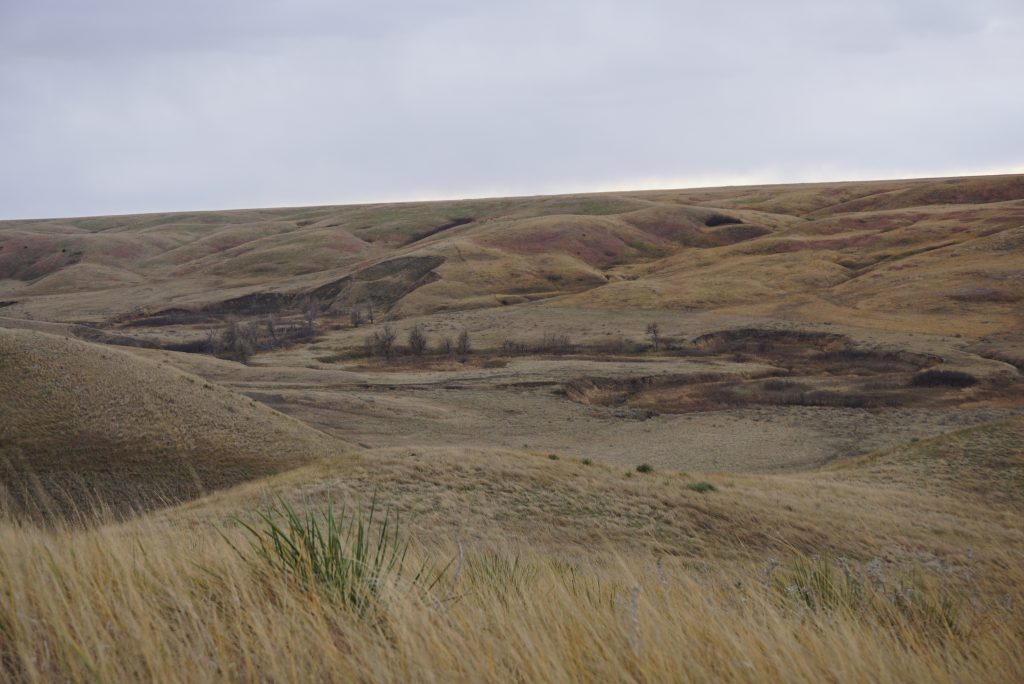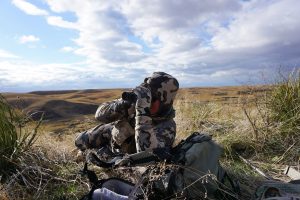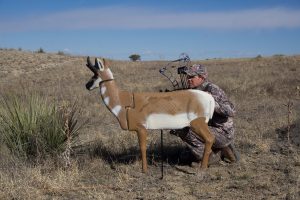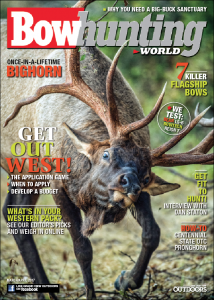You’ve done it. You’ve hit the “submit” button, and your last Western tag is applied for. If you’re anything like me, your credit card balance is teetering on the not-so-good-side, and you’re hoping your significant other doesn’t swipe the invoice from the mail slot before you have time to stash it away. Not to worry. We will be getting much of our money back with those leave-a-bad-taste-in-your mouth, “We appreciate you applying for the draw, but unfortunately…” letters.
Of course, the goal is to always draw one or two of those coveted tags in game-rich locales — tags reserved for quarry sporting quality headgear. But, I normally end up with a number of refund checks and zero limited-entry tags. The good news is that this doesn’t mean my hopes of a Western bowhunting adventure are dashed. The West is OTC (over-the-counter) tag rich, and I take full advantage of these buy-at-Walmart beauties.
Perhaps my favorite OTC tag is the one for Colorado pronghorn. The symbol of the American West, pronghorn are tailor-made for bowhunting. You can hunt them over water, on a fence crossing, spot-and-stalk, behind live horses, with a buck decoy ... I could go on and on. Not to mention of the 184 game management units in the Centennial State, 130 of them offer OTC licenses for archery pronghorn.
Currently, the state’s pronghorn population is estimated at 79,160 animals, with the bulk of those fleet-footed plains dwellers residing in the southeast, northeast and northwest regions. In 2015, archery success for the state was posted at 24 percent. With millions of acres of public land to stretch your legs, finding a spot to chase the prince of the plains isn’t a difficult task. Let’s get started.
Pronghorn, like all game animals, need shelter, food and water to thrive, but they also need something else ... open space. A pronghorn’s greatest weapon to avoid danger is its eyesight. Biologists have concluded the animal’s eyesight is equal to an eight-power pair of quality binoculars. If a pronghorn can’t see terrain sprawled out before it, the animal becomes very nervous, so focus on areas of the state where the landscape is open. Vast stretches of grassland, flat prairie and rolling sage are all great places to start your search. In addition, you will want to visit www.cpw.state.co.us and take a peek at the pronghorn GMU map.
This map will show you regions of the state where archers can find OTC opportunities. Pick a few units, pull them up on Google Earth and start prospecting. It’s really that simple. Another smart tactic is to pull up the 2015 post-hunt population estimates at http://bit.ly/2eDWASp. This handy PDF breaks down population by unit and provides a current buck-to-doe ratio. Once you find a few units with the right mixture of males and females and a healthy population, you can use a program like ONXMAPS to find public tracts of land. Lastly, it never hurts to sum up your research with a call to the area biologist.

Colorado is littered with public-land haunts teeming with pronghorn, and in many destinations, like these rolling hills, spot-and-stalk opportunities abound.
If Water Is in Play … Dedicate a Day!
You can arrive a day early or muck one day of hunting — it’s up to you — but I highly recommend dedicating a full day to scouting if your goal is a waterhole ambush. Pronghorn are very visible creatures, and you can learn a lot about the habits of the goats in your area and the landscape they dwell in if you simply commit to the scouting process.
Goats have to quench their thirst, and, if you can find the local watering hole, you’re almost certain to bloody an arrow. Start by looking over your area on Google Earth. Pinpoint natural or man-made ponds first. After you’ve located and plugged these locations into your GPS, turn to your paper map. Nearly all forest service, BLM and National Grassland maps show cattle stock tanks. Mark these slurp stations down as well.
While driving to and from water locations, take time to access high points and glass. You’ll often catch goats going to water, and, if the temperatures are really scorching, pronghorn will often be within a mile or two of their chosen refreshment stand throughout the day.
Small and natural dugouts are my first choice when it comes to pulling the dupe on a pronghorn over water. Why? Simple. A stock tank often requires the drinking goat to dip his head down and into the tank. This takes away his vision entirely. When drinking from a pond, the goat can water and still scan his surroundings. The only exception to this rule is when you find a stock tank that is overflowing. Goats will come from miles to slurp the pooled water from the leaking or overflowing tank.
Tracks and scrapes (pawed-out areas stained with urine and filled will milk duds) are your focus when prospecting for a good water source. Tracks are easily identifiable at ponds, but the ground around a stock tank can be cement hard. If cows are not in the area — and I suggest finding a tank cows aren’t using — check the old cattle trails coming to and from the tank. If goats are in the area, these trails will be littered with tracks and scrapes.
Once you find what you’re looking for, prop your blind up between 30 and 40 yards off the tank, and use any available cover to blend the blind in. Cover on the plains can be sparse, but sunflowers, old rusted windmill parts, fence posts and the like work great. The reason for the 30- to 40-yard placement is that the goats in the area will be much more accepting of your ground fortress.
Slither Like a Snake
There’s zero reason to scout if you’re planning to spot-and-stalk. You can scout while you hunt. I will promise you that creeping bowhunting-close to North America’s fastest land animal is no easy task. Spot-and-stalk success on pronghorn is less than 10 percent, and that percentage incudes all Western states, but if you’re up for a true bowhunting challenge, spot-and-stalk is the way to go. Plus, because pronghorn are so visible, it’s not uncommon to get multiple quality stalks in each day.
Gain a vantage point, set up your spotting scope and get to work just as the sun starts crawling over the eastern horizon. Scan the area with your binos until you locate a few white rumps. Now grab the spotter and see if a worthy buck is present. If so, don’t lose your head and make a premature move on the buck. Only move from your vantage point if you lose sight of your target animal. Stay patient, and stay behind the glass. Stay on the buck until he beds down, and then evaluate your options. I used to be super aggressive and go after every buck I put to bed. I don’t do that anymore. If your bowhunting savvy tells you getting to the buck without blowing him out and educating him is impossible or even highly unlikely, either stay on the buck and bed him again later in the day or move on to another area.
If the buck does bed in a favorable positon, get right to work. Spotting-and-stalking speed goats is much different than spotting-and-stalking a high-country mulie. Once bedded, early-season mulies often stay in their bunk all day, standing occasionally to stretch, shake the bugs off or nibble on some grass. Pronghorn are a different creature. The buck may bed for 20 minutes or he may bed for three hours.

There's no reason to scout beforehand because you're scouting as you go. Because pronghorn are so visible, it's common to have multiple quality stalks daily.
Use your spotting scope and binos in tandem to pick out at least five landmarks (more if the stalk is over 500 yards) that you’ll be able to clearly recognize once you slither off your little perch. These landmarks will keep you on course and prevent you from bumping the animal.
Next, and this step is crucial, pull out your smartphone, zoom in and snap pictures of each of the landmarks. Why? Because as distinguishable as you think your landmarks are, everything changes once you drop in elevation. Having digital images of your landmarks at your fingertips is priceless when those “I’m not sure where I’m at” moments happen, and I promise you they will happen.
Lastly, pull out your GPS and mark your current position, the estimated position of the buck and any other pronghorn that may be between you and your target. Doing this gives you another reference to check during your stalk.
Once you embark on your stalk, adhere to the “don’t go too fast, but hurry” philosophy. I’m not telling you to get reckless. I’m simply noting that when terrain features allow, you cover ground.
Move from landmark to landmark and resist the urge to be a groundhog. Only take a peek at your bedded prize when you’re absolutely sure you won’t be picked off.
Deke That Goat!
There isn’t a more exciting way to hunt pronghorn than behind an imposter decoy. I’ve tried them all, and let me promise you Rinehart’s Doloma Antelope Decoy reigns supreme.
Yes, its three-part design (the head and neck rest on PVC pipe so they can swivel) can be a bit of a pain to pack, but the realism and motion this decoy creates trumps any minor packing pangs.
Much like waterhole hunting, getting a pronghorn to commit to a decoy isn’t as easy as outdoor television makes it look. The window of opportunity is short. If I had to pick five days to pull the dupe on a speed goat with a decoy, it would be September 10-15 when a buck’s testosterone is spiking and the big boys are starting to round up their harems. During this “herding of the girls,” throngs of satellite bucks lurk nearby. Your job is to watch the interaction between herd bucks and satellite bucks. Once you find a herd buck running off smaller challengers, it’s time to take action.

Getting a pronghorn to commit to a decoy isn't an easy as TV make it seem, but when it works it's effective.
You can wait for the buck to bed with his ladies and then make a move on them, but my favorite decoy tactic is to let the target buck run off a challenger and then make my move. It’s an aggressive tactic, but if you can close some distance on the herd buck’s does while he is running off the challenger, you’re in the chips. It’s not uncommon for a buck to run a challenger for over half a mile and then stand and watch him for several minutes before turning back to his herd. If the first thing he sees when he turns around is your decoy, get ready for action.
If you opt to go the more passive route and try to decoy a buck bedded with his does, you do want to target a buck bedded on the back side of his ladies. A buck will always feel more threatened if his girls are between him and the challenger. However, don’t skimp on the opportunity simply because the buck isn’t bedded on the back side of his harem. This is where attention to detail really comes into play. Have you watched this target buck run off multiple challengers? Does he seem aggressive and push his does around? If the answer to the aforementioned questions is “yes,” then it typically won’t matter where the buck is bedded.
Don’t fret the no-coveted-tags-blues. You have the when, where and how to go mix it up with some prairie speedsters. Let me know how your adventure goes by dropping me a line at jbauserman@grandviewmedia.com.







